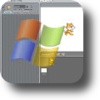Great for electricians and engineers - understand current flow thoroughly
Great for electricians and engineers - understand current flow thoroughly
Vote: (12 votes)
Program license: Free
Developer: Sidelinesoft
Version: 1
Works under: Windows
Vote:
Program license
(12 votes)
Free
Developer
Version
Sidelinesoft
1
Works under:
Windows
Pros
- Intuitive and user-friendly interface
- Simulates with true ideal components
- Unique algorithm that avoids convergence problems
- Speedy and reliable performance
- Great tool for learning and quick professional evaluations
Cons
- Limited component selection
- Lacks advanced features for specialized applications
- Not suitable for detailed component-level analysis
Analog Circuit Simulation with a Streamlined Approach
IdealCircuit is an analog circuit simulator that prides itself on employing true ideal components for its simulations. It boasts a unique and robust algorithm similar to that of the more complex NL5 Circuit Simulator. The standout feature of IdealCircuit is its commitment to simplicity. It offers an exceptionally straightforward user interface coupled with a limited selection of components and models. This design choice not only benefits beginners but also allows professionals to quickly sketch out and assess design concepts without the extensive detail required by standard SPICE-based tools.
User-Friendly Interface and Components
One of the major highlights of IdealCircuit is its user-friendly interface. This level of accessibility makes it an excellent tool for educational purposes, where students can work with the same schematic diagrams found in their textbooks. The interface ensures that anyone, regardless of their experience level, can jump in and begin creating circuit simulations without having to navigate through a steep learning curve.
Furthermore, the choice to include only essential components eliminates the often overwhelming task of combing through thousands of parts to find the one suitable for a specific application. Users can select from basic items like resistors, capacitors, and inductors, focusing on the fundamental principles of the circuit design without distractions.
Unique Simulation Algorithm
Underneath its simple exterior, IdealCircuit operates using a unique simulation algorithm that provides fast and reliable results when working with ideal components. What sets this algorithm apart is its ability to avoid the convergence issues that plague many SPICE-based simulators. By steering clear of these common pitfalls, IdealCircuit ensures a smoother and vastly more predictable simulation experience, allowing users to test out design concepts with confidence.
Applications and Performance
IdealCircuit is a great asset for both students and novices delving into the world of electronics theory. By simulating circuits as they appear in educational material, it reinforces learning and enhances understanding. Professional engineers benefit from the tool as well, as it enables them to perform quick evaluations of new designs and conduct preliminary analyses before diving into the minutiae with more sophisticated tools.
Performance-wise, IdealCircuit is tailored to execute rapid simulations, making it an excellent choice for swift design iterations and brainstorming sessions. While it may lack the depth of SPICE-based simulators in terms of component variety and advanced features, it more than compensates with its speed and ease of use.
Conclusion
IdealCircuit stands out as a streamlined, intuitive solution for analog circuit simulation. Its focus on ideal components and simplicity makes it a valuable teaching aid and a quick sketchpad for professionals. Though it may not feature the complexity needed for exhaustive analysis, its unique algorithm provides a solid foundation for quick and reliable circuit simulation.
Pros
- Intuitive and user-friendly interface
- Simulates with true ideal components
- Unique algorithm that avoids convergence problems
- Speedy and reliable performance
- Great tool for learning and quick professional evaluations
Cons
- Limited component selection
- Lacks advanced features for specialized applications
- Not suitable for detailed component-level analysis




